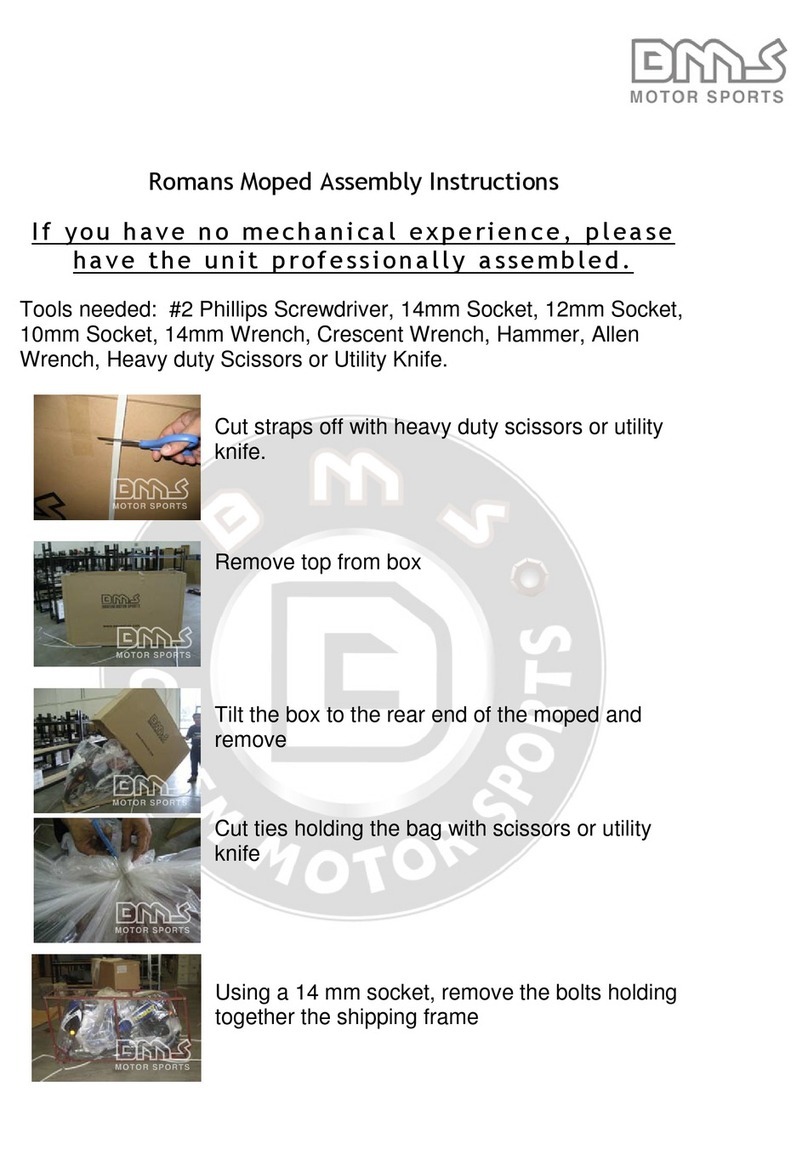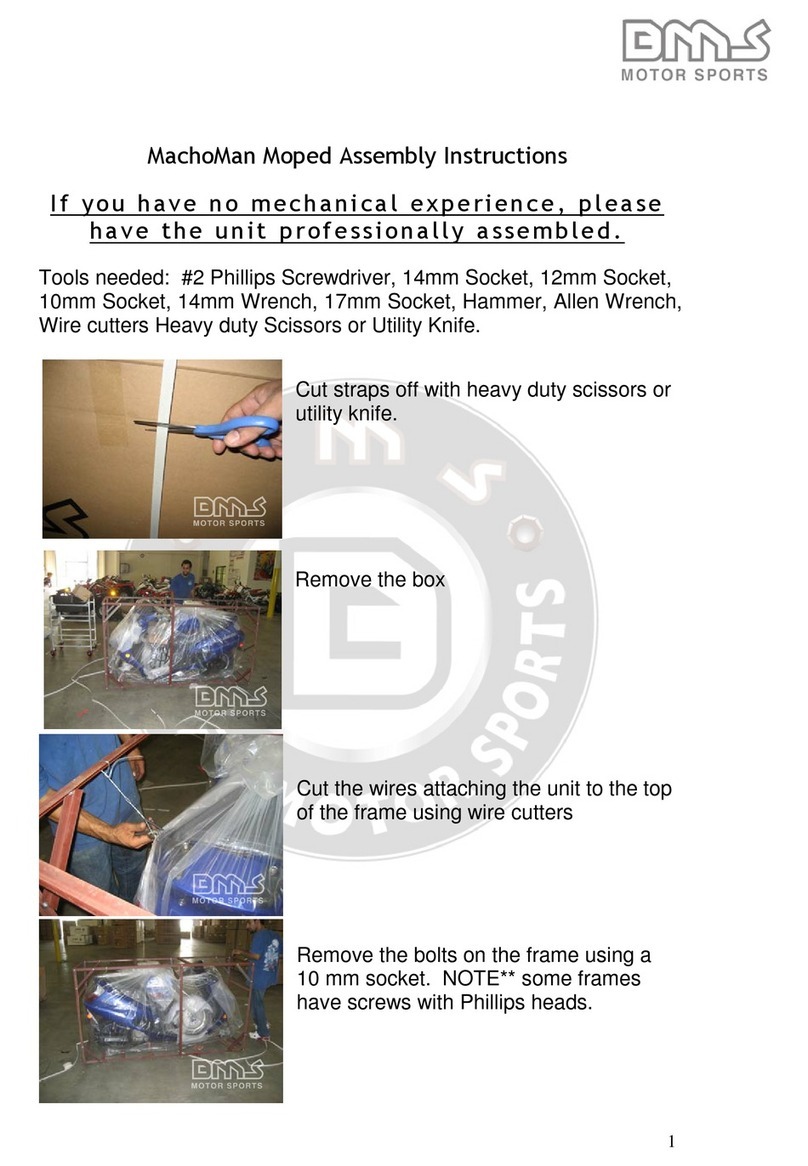Important Safety Information
Understand the challenges that you will face when operating a scooter will greatly improve your safety on the roads. There ar e
many things that you can do to protect yourself when riding. You will find many helpful recommendations throughout this
manual. Following are few that we consider most important.
Always Wear Protective Gears
It is a proven fact: helmets significantly reduce the number and severity of head injuries. Always wear helmets, eye protection,
sturdy boots, gloves, and other protective gears when riding.
Make Yourself Visible
Some drivers do not see scooters because they do not look for them. To make yourself more visible:
• Wear bright reflective clothing while riding.
• Position yourself in the traffic lane so other drivers can see you.
• Signal before turning or changing lanes.
• Use your horn to alert others on the road.
• Always use headlights while riding, even during daytime.
SAFETY INFORMATION
-
1
-
Ride Within Your Limit
Pushing the limits is a common cause of scooter accidents. Never ride beyond your personal abilities or faster than conditions
warrant. Remember that alcohol, drugs, fatigue and inattention can significantly reduce your ability to make good judgments and
ride safely.
Keep Your Scooter In Safe Condition
For safe riding, it is important to inspect your scooter before every ride, and perform recommended maintenance in a timely
manner.
Loading Limit Guidelines
Your scooter has been designed to carry you and one passenger. When you carry a passenger, you may notice some changes in
acceleration and braking. However, as long as you keep your scooter well maintained, with good brakes, you can safely carry
loads within manufacturer’s recommended weight limit. Exceeding the weight limit or carrying an unbalanced load can
seriously affect your scooter’s handling, braking, and stability. Improper modifications and poor maintenance can also reduce
your safety.
SAFETY INFORMATION
-
2
-
1. R and L rear mirror
2. R and L brake
3. Helmet hook
4. Speedometer
5. Main switch
6. Battery
7. Air cleaner
8. Seat lock
9. Rear light assembly
10. R and L reflector
11. Oil tank
12. Center stand
13. Kick starter
14. Side stand
15. Muffler
16. R and L rear turn signal
17. Headlights
18. L and R turn light
DESCRIPTION
-
3
-
11
7
10
16
8
3
2
4
13
12
9
5
15
10
1
18
6
17
14
























